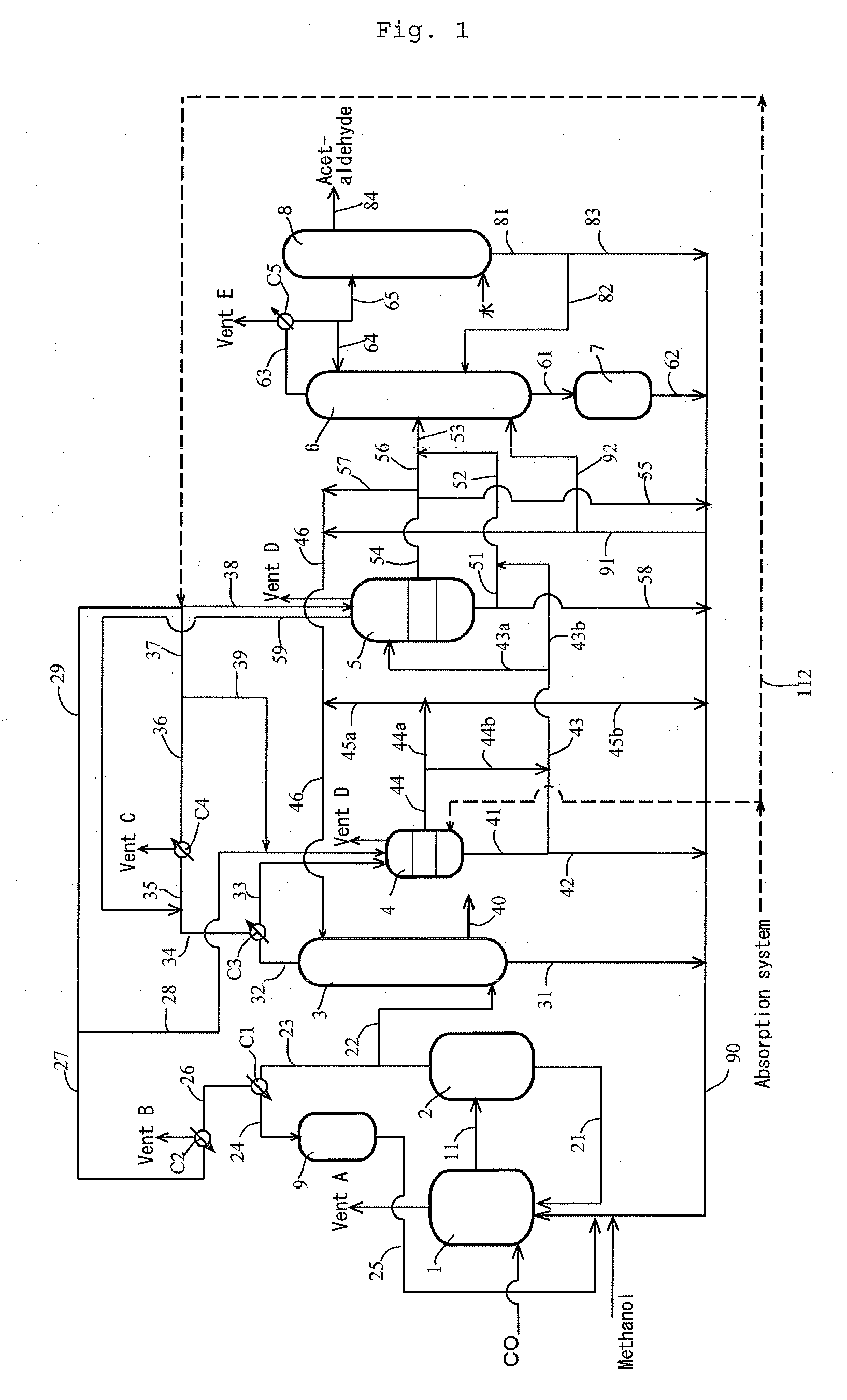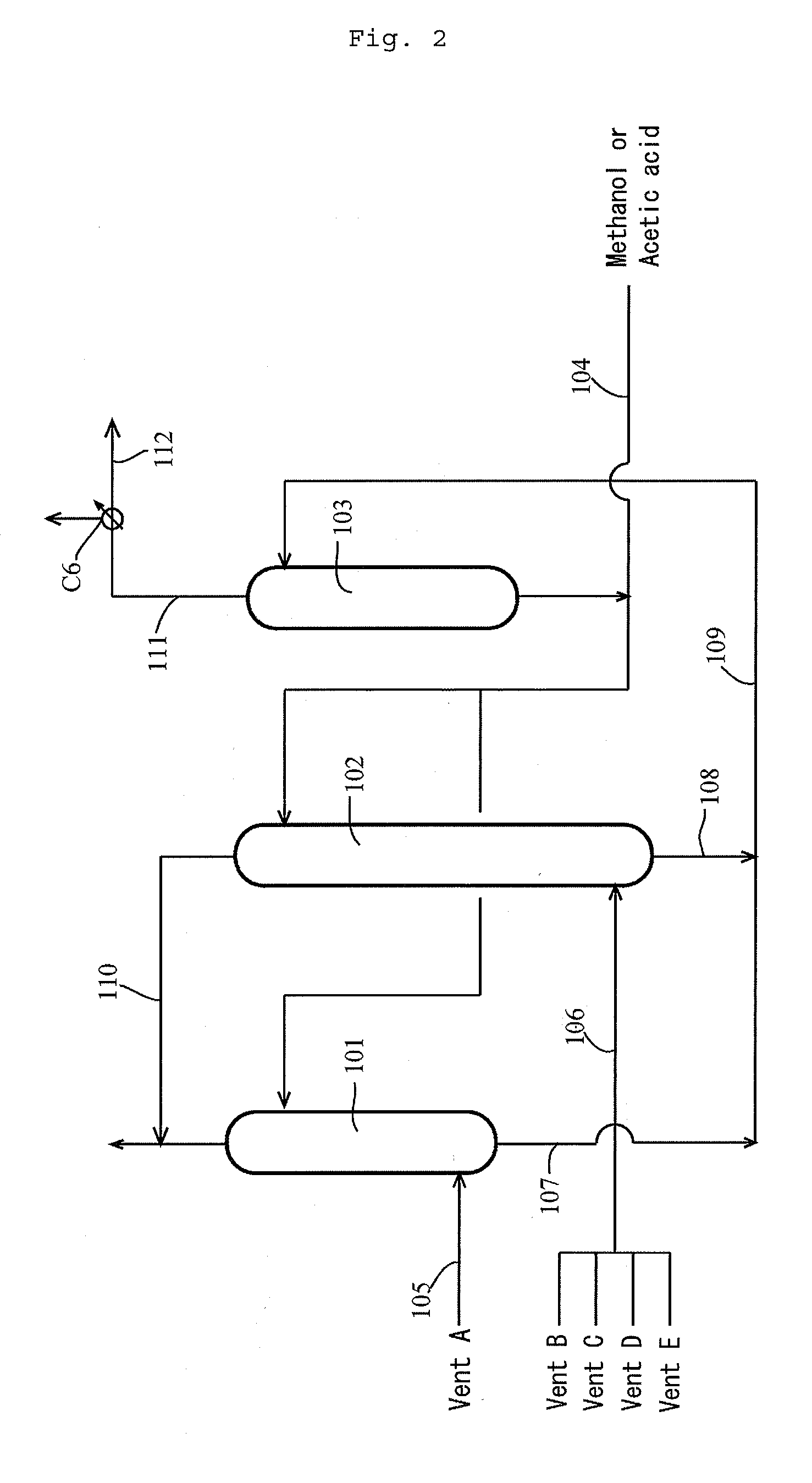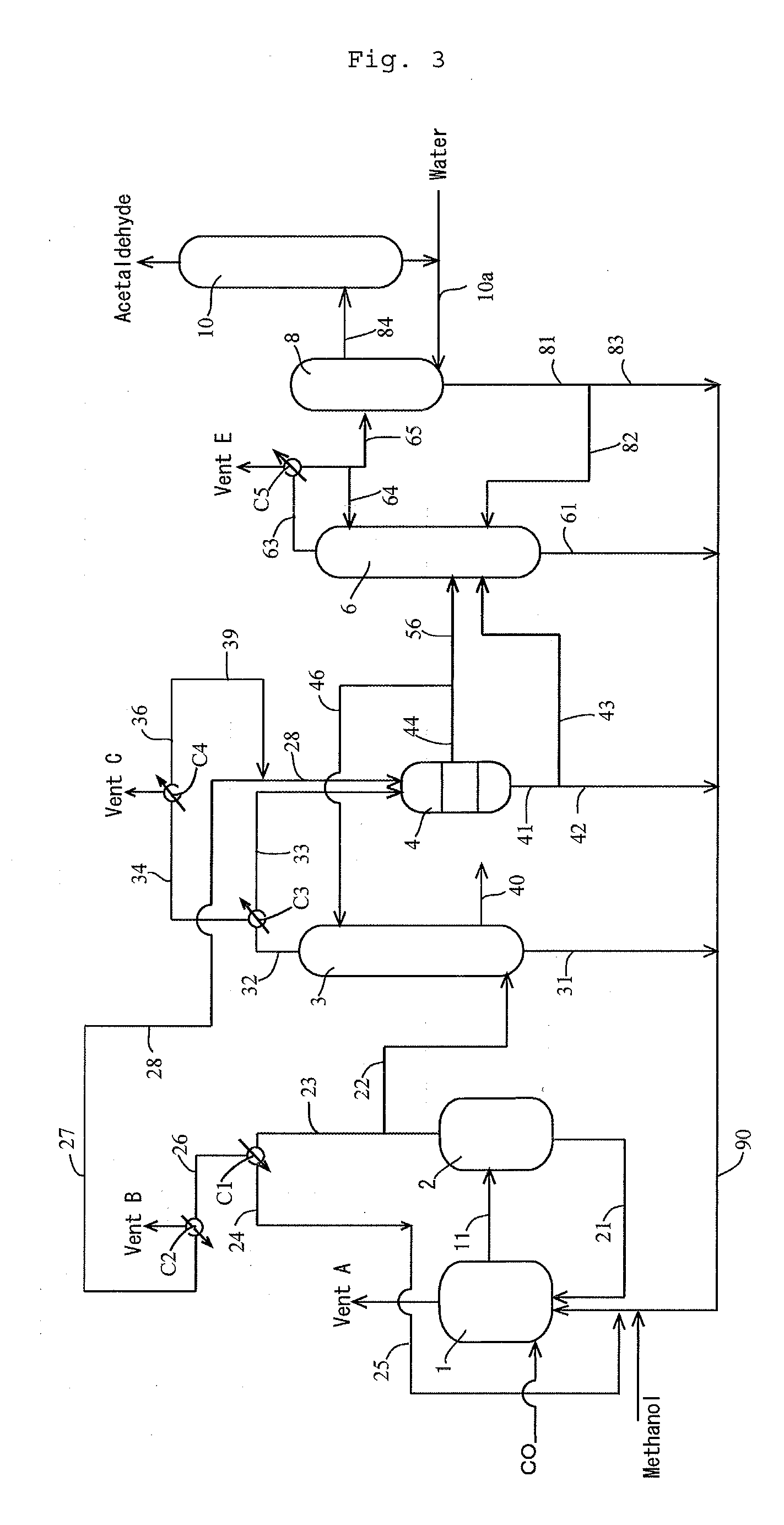Process for producing acetic acid
a technology of acetic acid and process, applied in the direction of physical/chemical process catalyst, organic compound/hydride/coordination complex catalyst, separation process, etc., can solve the problems of small concentration of impurities which are difficult to quantitatively determine, adverse effects of impurities, and low quality of acetic acid, so as to achieve high-quality acetic acid, improve acetaldehyde removal efficiency, and high-quality acetic acid
- Summary
- Abstract
- Description
- Claims
- Application Information
AI Technical Summary
Benefits of technology
Problems solved by technology
Method used
Image
Examples
example 1
[0184]According to the apparatus (or process) shown in FIG. 1, the process for producing acetic acid was conducted continuously. Specifically, the first overhead (3A) was cooled by the first condenser C3 at a controlled coolant temperature to forma first condensate having a temperature of 38° C. (and a first gaseous component having a temperature of approximately 38° C.). The first gaseous component was cooled by the second condenser C4 at a controlled coolant temperature, and a whole second condensate from the second condenser C4 was fed to the hold tank (which functioned as a decanter when the condensate forms separated liquid phases) 5 via the lines 36 and 38, where the line 36 had a temperature of 12° C., the flow rate in the line 39 was zero “0”. Moreover, the first condensate was fed to the decanter 4 to form an upper layer and a lower layer. The lower layer (lower phase) was fed to the hold tank 5 via the lines 41, 43 and 43a (wherein the flow rate in the line 43b was zero “0...
example 2
[0189]The experiment was carried out in the same manner as in Example 1 except that the temperature of the first condensate was 50° C.
[0190]The composition of the first condensate (in line 43a) fed to the hold tank 5 was as follows: 86.9% by weight methyl iodide, 10.9% by weight methyl acetate, 0.9% by weight acetic acid, 1.0% by weight water, 0.169% by weight acetaldehyde, and 0.001% by weight hydrogen iodide. The composition of the second condensate (in line 38) was as follows: 85.7% by weight methyl iodide, 11.6% by weight methyl acetate, 0.2% by weight acetic acid, 2.0% by weight water, 0.354% by weight acetaldehyde, and 0.001% by weight hydrogen iodide. The feed ratio of the first condensate relative to the second condensate was 84.2% by weight relative to 15.8% by weight. Thereafter, the offgas from the hold tank 5 was recycled to the line 35 via the line 59. The amount (in line 51) of the mixture of the first condensate and the second condensate withdrawn from the hold tank 5...
example 3
[0193]The experiment was carried out in the same manner as in Example 1 except that the temperature of the first condensate was 63° C.
[0194]The first condensate (in line 43a) fed to the hold tank 5 was zero. The composition of the second condensate (in line 38) was as follows: 85.2% by weight methyl iodide, 12.3% by weight methyl acetate, 0.3% by weight acetic acid, 1.8% by weight water, 0.212% by weight acetaldehyde, and 0.001% by weight hydrogen iodide. The feed ratio of the first condensate relative to the second condensate was 0% by weight relative to 100% by weight. Thereafter, the offgas from the hold tank 5 was recycled to the line 35 via the line 59. The amount (in line 51) of the mixture of the first condensate and the second condensate withdrawn from the hold tank 5, that is the amount (in line 53) of the condensate fed to the distillation column 6, was 95% of the total amount (the second condensate (line 38)) fed to the hold tank 5. Moreover, the composition of the conden...
PUM
| Property | Measurement | Unit |
|---|---|---|
| temperature | aaaaa | aaaaa |
| temperature | aaaaa | aaaaa |
| temperature | aaaaa | aaaaa |
Abstract
Description
Claims
Application Information
 Login to View More
Login to View More - R&D
- Intellectual Property
- Life Sciences
- Materials
- Tech Scout
- Unparalleled Data Quality
- Higher Quality Content
- 60% Fewer Hallucinations
Browse by: Latest US Patents, China's latest patents, Technical Efficacy Thesaurus, Application Domain, Technology Topic, Popular Technical Reports.
© 2025 PatSnap. All rights reserved.Legal|Privacy policy|Modern Slavery Act Transparency Statement|Sitemap|About US| Contact US: help@patsnap.com



